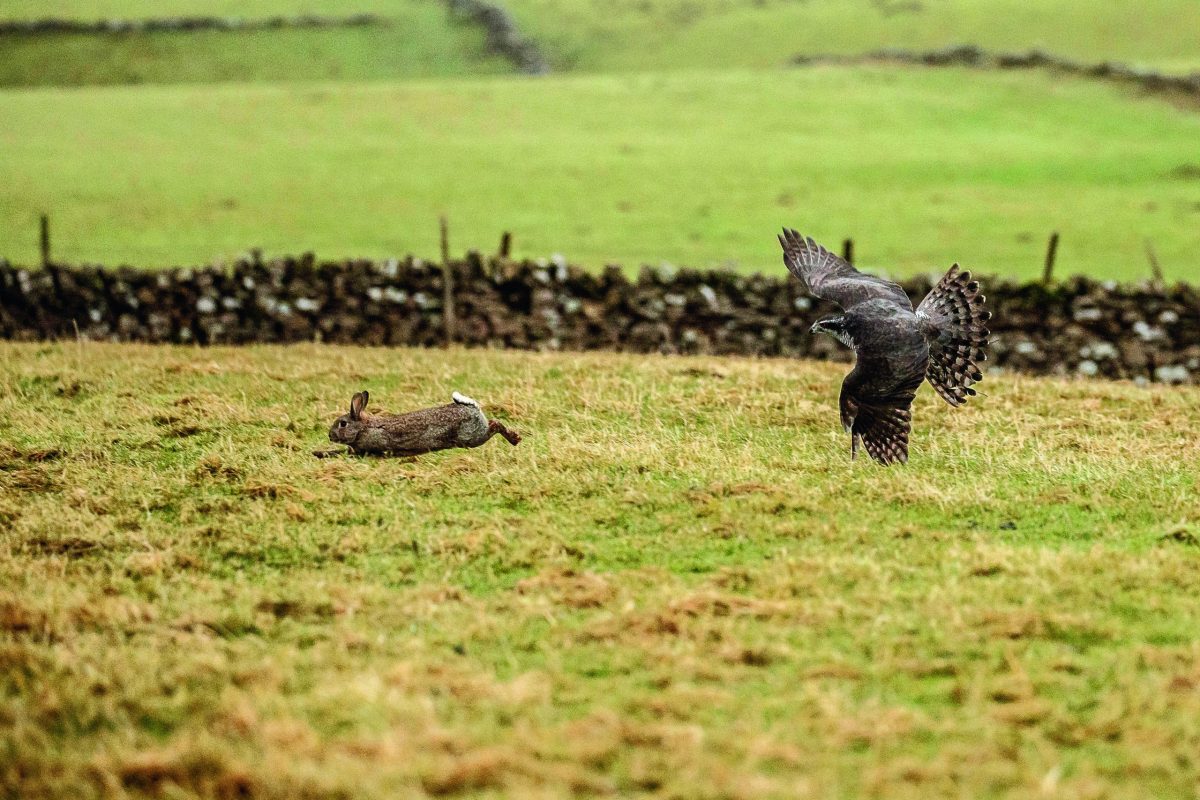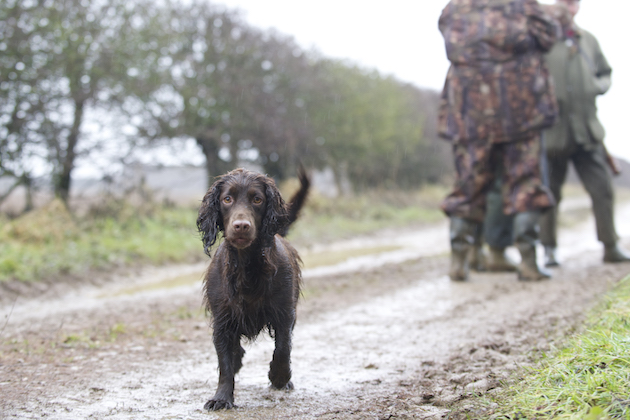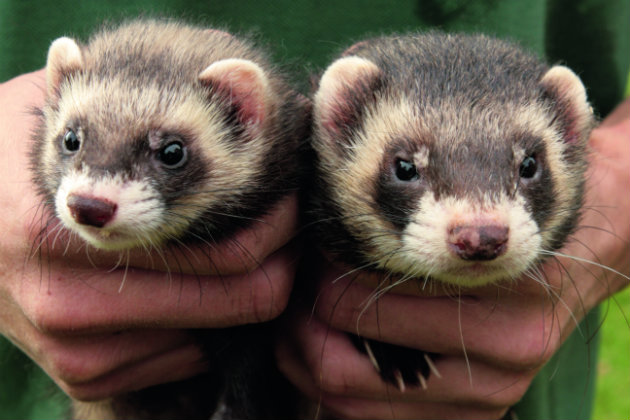Foreshore ferreting
Maud! Millie! Behind you! Simon shouted, as he raced forward, pointing his two lurchers in the direction of a bolting rabbit. The long wait we had endured before a rabbit emerged made for a charged atmosphere, which blinded us to the absconder. The speed of the two species was almost matched, with only the rabbits agility giving it a slight edge. Then, inches before the safety of the warren, Maud skilfully pinned the coney to the sandy earth while Millie respectfully stood back and watched the senior dog.
The day after the wildfowling season closed, professional ferreter and Shooting Times columnist, Simon Whitehead, was on the foreshore of the Blyth estuary to help tackle north Suffolks burgeoning rabbit population. For this particular job Simon had engaged the entire army of his Pakefield ferrets as the warren in question has existed since the 1930s and is now a complex network of pipes reaching depths of up to 40ft. With 12 hungry ferrets, two sharp-eyed lurchers and a handler completely in tune with his animals, the odds seemed stacked against the rabbits. Against the background clamour of migratory wildfowl feeding on the exposed mudflats, Simon placed six albino jills into the burrow openings. Maud and Millie took up their positions. Like coiled springs they waited, lightly trotting between the burrows so as not to cause subterranean vibrations. The bitches ears twitched as they tried to predict where the next coney would appear.
Fellow ferreting enthusiasts Steve and Marie Taylor joined Simon to help with the diffi cult warren. Trained chef Marie is in charge of all catering on ferreting expeditions. Before I became involved the boys used to get a few sips of lukewarm coffee out of a dirty Thermos if they were lucky, she said, as she took a sip of cappuccino. For the team on this day, Marie provided a delicious alfresco lunch of rabbit burgers and game sausages. In my experience, a lot of people are still wary of game meat. I teach cookery at the local college and they refuse to take me up on my offer of bringing in fresh rabbit, which is a real shame.
Tools of the trade
A vital element of the ferreters kit is his collection of nets. All of Simons ferreting nets are handmade by Sheffi eldbased Ian Clayton, also known as Torchy, a reference to his obsession with lamping. Simon uses a mixture of purse- and long-nets to create a makeshift corral. Even the best net in the world needs to be laid correctly to work, Simon explained. The craftsmanship that goes into handmade nets has to be admired; look at the uniformity of the meshes, the strength of the knots and how the draw cord has been fitted.
The traditional ferreting season runs from October until March. Working the ferrets this late in the season presents several obstacles. Does tend to be pregnant and often refuse to move from the safety of their warren, even when confronted by a ferret. The sandy soil of this particular warren meant that it was easy to dig out stubborn ferrets that laid-up, but the pipes were wider than normal, meaning a cornered rabbit could squeeze past its assailant.
The problem of how to retrieve a ferret is as old as ferreting itself, said Simon, as he carefully placed a jill back in its box. When the ferret finders first came out, the device was ground-breaking. But people cannot seem to grasp how to use them properly. One of the questions I get asked most is how to read the signal and tones on the handset, he explained.
As a result, Simon has made a film showing how to train your ear to the device, which can be viewed on the Shooting Times website (www.shootingtimes.co.uk). Once the ferret has been located, it will often need to be fished for. If a ferret has locked on to a rabbit and refuses to resurface, Simon sometimes has to dig 8ft down and entice the reluctant ferret out with a despatched rabbit. So how often does Simon lose a ferret? I dont, he replied.
Simon and his team netted-up three separate sections of the warren, using all the ferrets to cover as much of the warren as possible. In the second section five rabbits bolted out of their burrows, heading either straight into purse-nets or into the long-nets. The lurchers then pinned them to the ground until Simon or Steve despatched them.
The enormous amount of work that went into setting up all the nets, working the dogs and establishing a team of ferrets made this days final bag of 10 rabbits very satisfactory. Whether a ferreter chooses to use lurchers, terriers or even hawks, the anticipation of waiting for a bolting rabbit is incredibly exciting. It is easy to see why the popularity of ferreting is growing.
For more information on Pakefield Ferrets, visit www.pakefieldferrets.co.uk.








